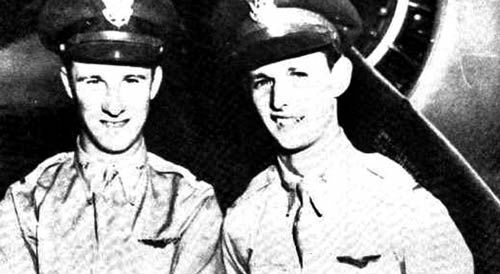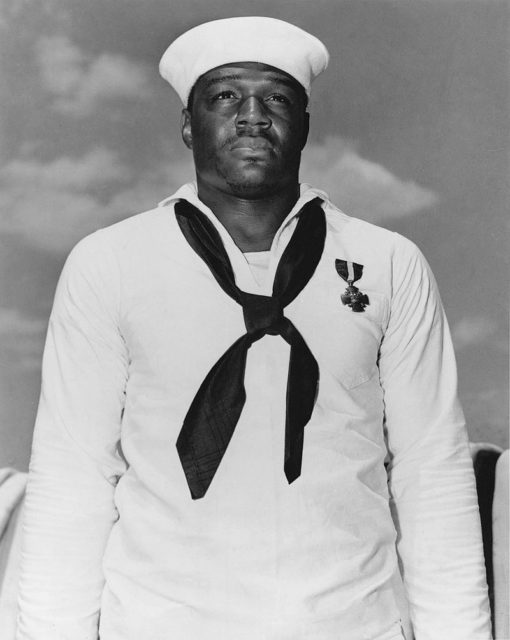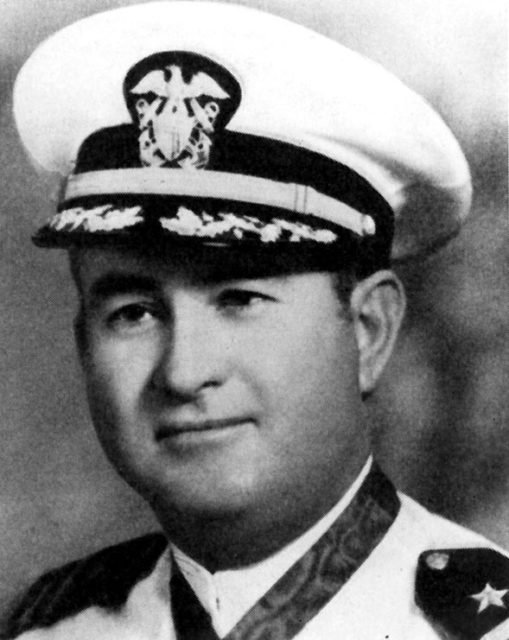The catastrophic events of the morning of December 7th, 1941 that took place on a far off island in Pacific kick-started one of the most brutal war phase of 20th century warfare, known as the Pearl Harbor. As the European continent engulfed in the thick black smoke of war and destruction that killed millions, Imperial Japan announced the support for Nazi axis in the Second World War. It did so quiet graphically, by launching an attack on a US outpost on the island of Pearl Harbor. Some 350 fighter planes and bombers rigged with all kinds of bombs and torpedoes rained down and over the military base killing the upwards of 3,500 soldiers and sailors and causing monumental damage to the ships and other equipment. With this clear act of war, the Japanese had prepared itself for a US response which it adequately received, starting a conflict that ended with the destruction of most of the major Japanese cities and obliteration of Nagasaki and Hiroshima by American atomic bombs. Following are some heroic tales that emerged from the devastation of Pearl Harbor.
Kenneth Taylor and George Welch

At dawn on December 7, 1941, 2nd Lt. Welch and another pilot, 2nd Lt. Ken Taylor, were coming back from a Christmas dinner and dance party (with big band orchestra) at a rooftop hotel in Waikiki, that ended in an all-night poker game. They were still wearing mess dress when the Japanese attacked Pearl Harbor. Welch telephoned an auxiliary Haleiwa Fighter Strip on Oahu’s North Shore to have two Curtiss P-40B Tomahawk fighters prepared for takeoff. He and Taylor immediately drove his Buick at high speed to Haleiwa in order to join the air battle.
Taking off with only 30 cal ammo in the wing guns, Welch claimed two kills of Aichi D3A Val dive bombers over Ewa Mooring Mast Field.The first Japanese aircraft was only damaged and it made it back to its carrier while the second was finished off by Ken Taylor, shortly before he landed at Wheeler Field to get 50 cal ammo for his two cowl guns. On his second sortie, Welch shot down a Val (which was behind Ken Taylor, and crashed in the community of Wahiawa) then one Mitsubishi Zero fighter about five miles west of Barbers Point.
Both Welch and Taylor were nominated for the Medal of Honor by Gen. Henry H. Arnold, but were awarded the Distinguished Service Cross, the highest USAAF medal, for their actions.
Doris “Dorie” Miller

On December 7, 1941, Miller awoke at 0600. After serving breakfast mess, he was collecting laundry when the first of nine torpedoes to hit the West Virginia was launched at 0757 by Lieutenant Commander Shigeharu Murata of the Japanese carrier Akagi. Miller headed for his battle station, an anti-aircraft battery magazine amidship, only to discover that torpedo damage had destroyed it.
He went instead to “Times Square”, a central spot where the fore to aft and port to starboard passageways crossed, and reported himself available for other duty. Miller was spotted by Lieutenant Commander Doir C. Johnson, the ship’s communications officer, who ordered the powerfully built sailor to accompany him to the bridge to assist with moving the ship’s captain, Mervyn Bennion, who had a gaping wound in his abdomen where he had apparently been hit by shrapnel. Miller and another sailor lifted the skipper and, unable to remove him from the bridge, carried him from an exposed position on the damaged bridge to a sheltered spot behind the conning tower. The captain refused to leave his post, questioned his officers about the condition of the ship, and gave orders.
Lieutenant Frederic H. White ordered Miller to help him and Ensign Victor Delano load the unmanned #1 and #2 Browning .50 caliber anti-aircraft machine guns aft of the conning tower. Miller was not familiar with the machine gun, but White and Delano told him what to do. Miller had served both men as a room steward and knew them well. Delano expected Miller to feed ammunition to one gun, but his attention was diverted, and when he looked again, Miller was firing one of the guns. White had loaded ammunition into both guns and assigned Miller the starboard gun.
Miller fired the gun until he ran out of ammunition, when he was ordered by Lieutenant Claude V. Ricketts along with Lieutenant White and Chief Signalman A.A. Siewart to help carry the captain up to the navigation bridge out of the thick oily smoke generated by the many fires on and around the ship. Bennion was only partially conscious at this point, and died soon after. Japanese aircraft eventually dropped two armor-piercing bombs through the deck of the battleship and launched five 18 in (460 mm) aircraft torpedoes into her port side. When the attack finally lessened, White ordered Miller to help move injured sailors through oil and water to the quarterdeck, thereby “unquestionably saving the lives of a number of people who might otherwise have been lost.”
With the ship heavily damaged by the bombs, torpedoes and following explosions, the crew prevented her from capsizing by counter-flooding a number of compartments, and the West Virginia sank to the harbor bottom as her crew—including Miller—abandoned ship.
Samuel Fuqua – Medal of Honor

For distinguished conduct in action, outstanding heroism, and utter disregard of his own safety, above and beyond the call of duty during the attack on the Fleet in Pearl Harbor, by Japanese forces on 7 December 1941. Upon the commencement of the attack, Lieutenant Commander Fuqua rushed to the quarterdeck of the U.S.S.Arizona to which he was attached where he was stunned and knocked down by the explosion of a large bomb which hit the quarterdeck, penetrated several decks, and started a severe fire. Upon regaining consciousness, he began to direct the fighting of the fire and the rescue of wounded and injured personnel. Almost immediately there was a tremendous explosion forward, which made the ship appear to rise out of the water, shudder and settle down by the bow rapidly. The whole forward part of the ship was enveloped in flames which were spreading rapidly, and wounded and burned men were pouring out of the ship to the quarterdeck. Despite these conditions, his harrowing experience, and severe enemy bombing and strafing, at the time, Lieutenant Commander Fuqua continued to direct the fighting of fires in order to check them while the wounded and burned could be taken from the ship, and supervised the rescue of these men in such an amazingly calm and cool manner and with such excellent judgement, that it inspired everyone who saw him and undoubtedly resulted in the saving of many lives. After realizing that the ship could not be saved and that he was the senior surviving officer aboard, he directed that it be abandoned, but continued to remain on the quarterdeck and directed abandoning ship and rescue of personnel until satisfied that all personnel that could be had been saved, after which he left the ship with the (last) boatload. The conduct of Lieutenant Commander Fuqua was not only in keeping with the highest traditions of the Naval Service but characterizes him as an outstanding leader of men
Peter Tomich – Medal of Honor

Adding another story among many emigrant tales that contributed to US society, Peter Tomich an Austrian-Hungarian emigrant serving as Chief Watertender onboard training and target ships USS Utah single handed tried to safe his ship and went down with it.
By 1941, he had become a chief watertender on board the training and target ship USS Utah. On December 7, 1941, while the ship lay in Pearl Harbor, moored off Ford Island, she was torpedoed during Japan’s raid on Pearl Harbor. Tomich was on duty in a boiler room. As Utah began to capsize, he remained below, securing the boilers and making certain that other men escaped, and so lost his life. For his “distinguished conduct and extraordinary courage” at that time, he posthumously received the Medal of Honor. His Medal of Honor was on display at the Navy’s Senior Enlisted Academy (Tomich Hall). Later, the decoration was presented to Tomich’s family on theUSS Enterprise aircraft carrier in the southern Adriatic city of Split in Croatia, on 18 May 2006, sixty-four years after US President Franklin D. Roosevelt awarded it to him.
- “For distinguished conduct in the line of his profession, and extraordinary courage and disregard of his own safety, during the attack on the Fleet in Pearl Harbor by the Japanese forces on 7 December 1941. Although realizing that the ship was capsizing, as a result of enemy bombing and torpedoing, Tomich remained at his post in the engineering plant of the U.S.S. Utah, until he saw that all boilers were secured and all fireroom personnel had left their stations, and by so doing lost his own life.
